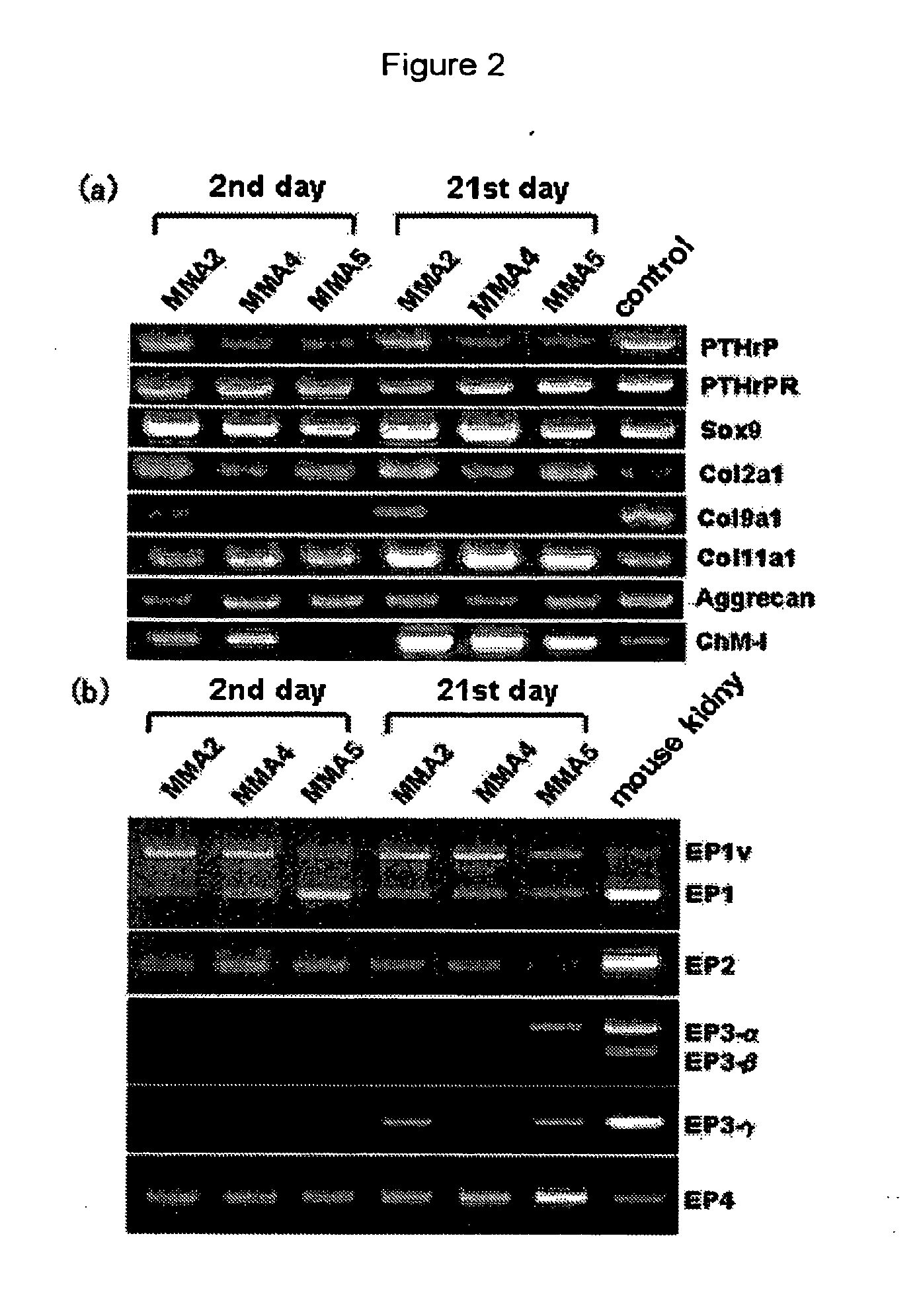Remedy for cartilage-related diseases
a cartilage-related disease and treatment technology, applied in the direction of biocide, drug composition, peptide/protein ingredients, etc., can solve the problems of not being established as an effective treatment method, and activities other than the aimed activity become side effects, etc., to inhibit cartilage degradation, inhibit cartilage calcification, and stimulate chondrogenesis
- Summary
- Abstract
- Description
- Claims
- Application Information
AI Technical Summary
Benefits of technology
Problems solved by technology
Method used
Image
Examples
example 1
[0391]Cartilage tissues of a femur and the shinbone collected from a p53 defective mouse of 4 weeks of age (Tukada, T., Oncogene, 1992, vol. 8, pp. 3313-3322) were cut into pieces, treated with 0.1% collagenase and then cultured (culture conditions; 5% CO2, 37° C., under humidification, hereinafter, this was carried out under the same conditions) using DMEM / Ham's F12 (1:1) medium (contains 10% fetal bovine serum (FBS) and antibiotics (to be referred to as DMEM / Ham's F12 medium hereinafter)). By carrying out dilution sub-culturing from the cell group under a 80 to 90% confluent state, a chondrocyte strain MMA2 recognized by an international deposition number FERM BP-10029 was isolated. Expression analysis of the chondrocyte strain by RT-PCR method revealed that it expressed articular cartilage-related genes of type II collagen, aggrecan and the like (FIG. 2 (a)). Also, this was a cell having characters as an articular chondrocyte, such as formation of no calcified node even after a l...
example 2
[0393]Each of the chondrocytes was cultured at a cell density of 3×105 cells / 100 mm culture dish (contains 5 μM indometacin). By respectively adding (17S)-2,5-ethano-6-oxo-17,20-dimethyl-PGE1 as a selective EP1 agonist, (5Z,9β,11α,13E)-17,17-propano-11,16-dihydroxy-9-chloroprostar-5,13,19-trienoic acid as a selective EP2 agonist, 11α,15α-dimethoxy-9-oxoprosta-5Z,13E-dienoic acid as a selective EP3 agonist, and 11α,15α-dihydroxy-9-oxo-16-(3-methoxymethylphenyl)-17,18,19,20-tetranol-3,7-dithiaprost-13E-enoic acid (obtained from ONO PHARMACEUTICAL CO., LTD.) as a selective EP4 agonist, respective actions after 72 hours were evaluated.
example 3
[0394]Monolayer culturing of each of the chondrocytes was started using DMEM / Ham's E12 medium containing 50 mg / ml of ascorbic acid. Medium exchange was not carried out for the first 6 days after commencement of the culturing, but carried out thereafter on every other day, and cultured cell pellet recovered on the 21st day was fixed with 20% formaldehyde and embedded in paraffin. Its section of 6 μm in thickness was stained with hematoxylin-eosin (0.1 N) hydrochloric acid solution or 0.1% alcian blue (0.1 N) hydrochloric acid solution and photographed using an optical microscope.
PUM
 Login to View More
Login to View More Abstract
Description
Claims
Application Information
 Login to View More
Login to View More - R&D
- Intellectual Property
- Life Sciences
- Materials
- Tech Scout
- Unparalleled Data Quality
- Higher Quality Content
- 60% Fewer Hallucinations
Browse by: Latest US Patents, China's latest patents, Technical Efficacy Thesaurus, Application Domain, Technology Topic, Popular Technical Reports.
© 2025 PatSnap. All rights reserved.Legal|Privacy policy|Modern Slavery Act Transparency Statement|Sitemap|About US| Contact US: help@patsnap.com



